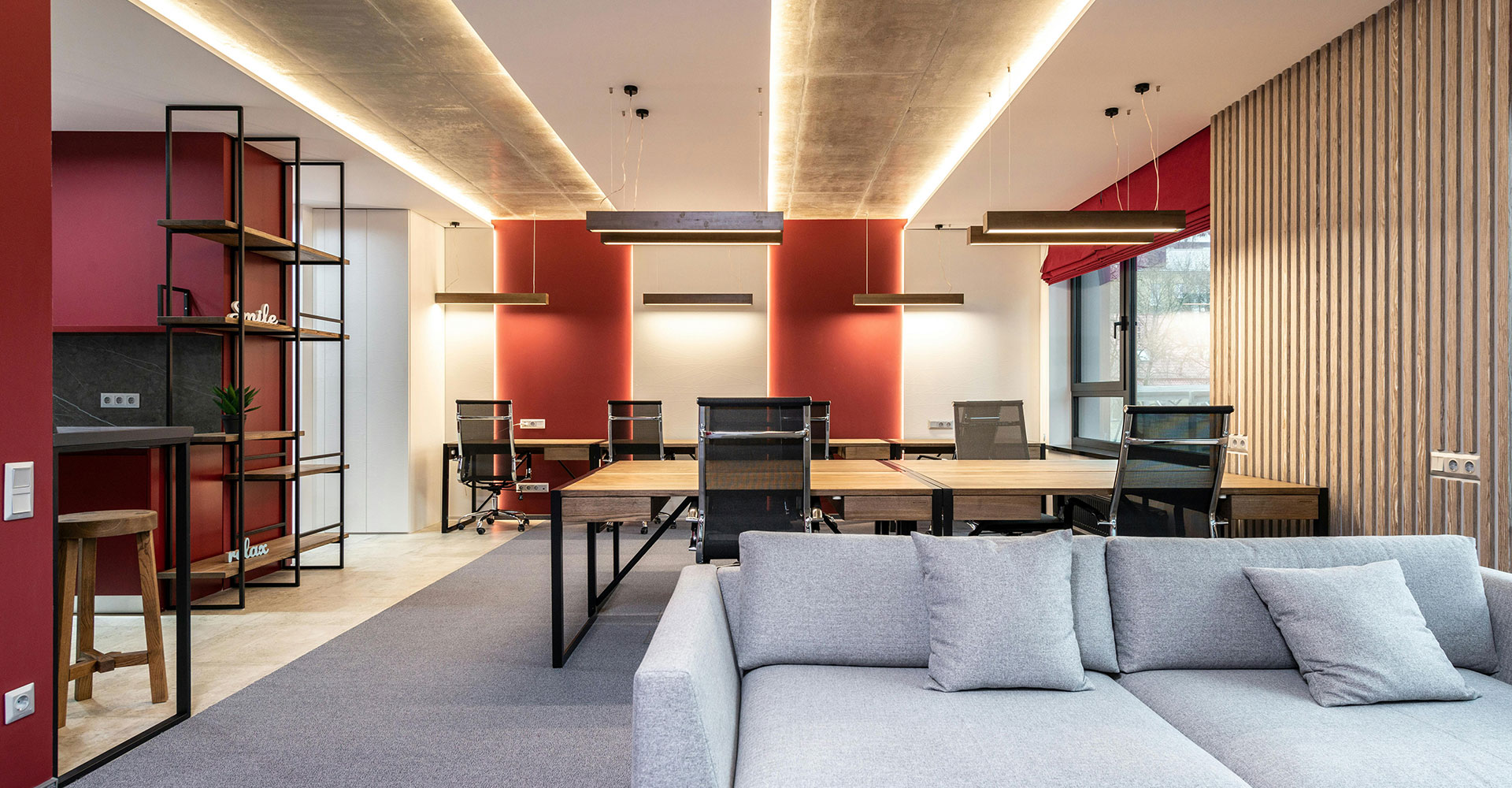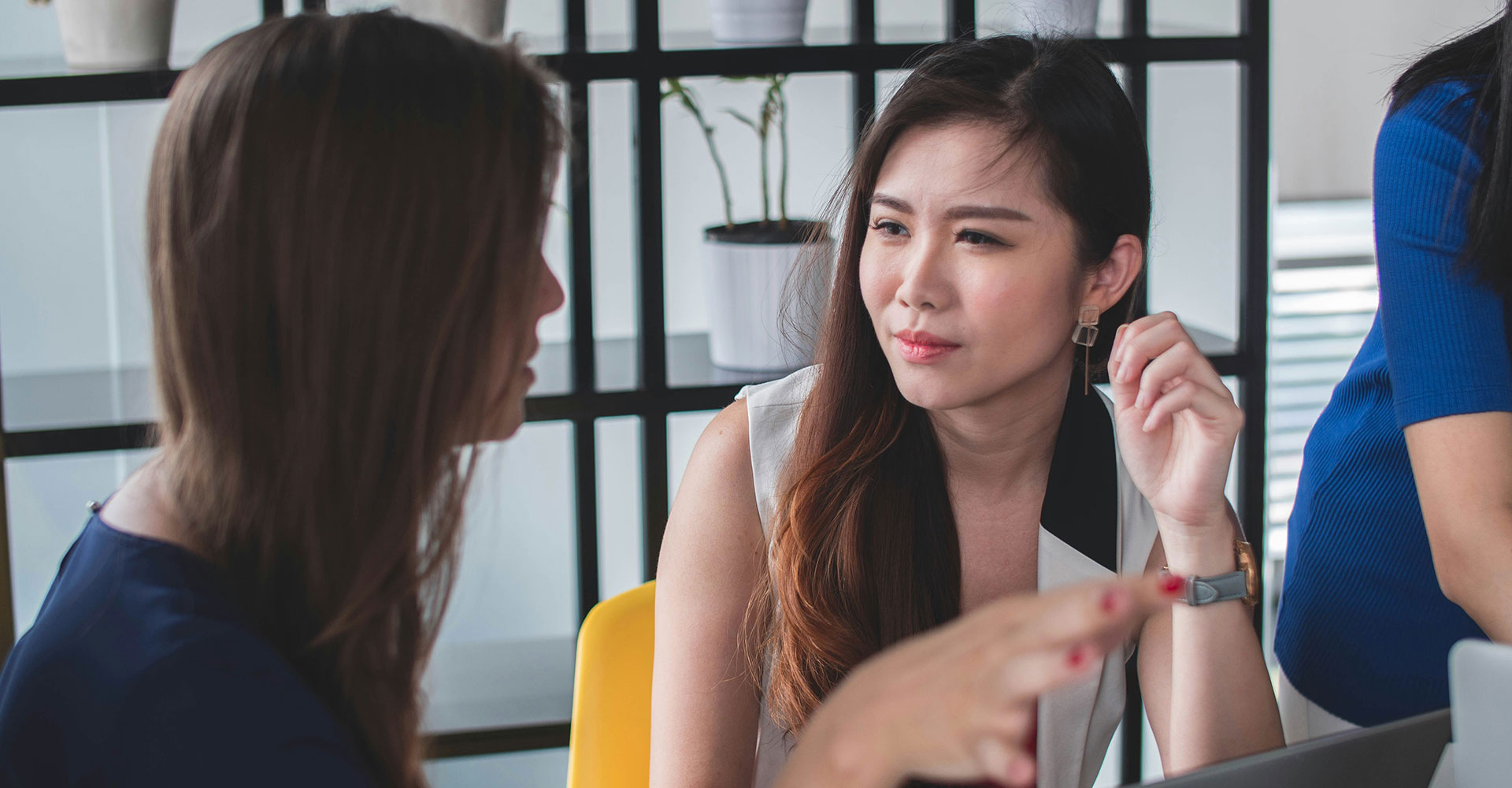The 2019 office has trended toward ergonomics and increased efficiency, and 2020 shows the same focus continuing. Designers, managers, and employees alike recognize that a comfortable environment that includes elements designed to promote relaxation, collaboration, and communication makes life easier and generates greater productivity and effectiveness—and happier employees.
Merging Technology & Furniture
As technology evolves to become a ubiquitous presence in the work environment, manufacturers are adapting furniture to integrate a diverse range of technological elements. Desks include charging pads for mobile phones and tablets. Credenzas and tables integrate screens to facilitate virtual meetings that connect people across the globe.
Thanks to the need to track population density and area usage in corporate parks that have evolved into small cities, some companies now use customized smart desks that integrate with occupancy sensors to track occupancy percentage by floor or room, offer sitting or standing options, and provide insight on traffic flow and utilization. The benefits of this technology include identifying space-saving opportunities—like converting a little-used conference room into smaller offices—and energy conservation, too.
And, in lieu of the traditional desktop computer, more companies have opted to use laptops, which give their employees more freedom to work anywhere. That mobility and portability has required that offices adjust accordingly, with additional power outlets, wireless charging stations, video conferencing technology, presentation screens, smartboards, data ports, and any other equipment that facilitates smart, efficient working.
Flexible, Multifunctional Spaces
Single purpose rooms still have a role, but more companies see the value in the versatility of multifunctional areas that adapt to a variety of needs, like:
- Meetings
- Interviews
- Brainstorming sessions
An ancillary benefit to setting up rooms as flexible, multifunctional spaces is that these environments encourage communication between departments that might otherwise be siloed to facilitate a more open flow of ideas and information. Equipping these open spaces with freestanding media units that can “travel” from space to space also works well for smaller meetings and presentations.
Smaller businesses, freelancers, remote employees, and some big brands lean toward open, shared workspaces, which offer a low-cost, convenient alternative to traditional workspaces. These cohabitation spaces enable multiple companies and people to share the same resources, spaces, and even talent.
Instead of traditional walls that divide giant rooms into smaller cubicles and segmented individual workstations, these spaces incorporate open plan desking which increases community, boosts collaboration, and cultivates social relationships. Outfit these spaces with workspace furniture, like large worktables that include power outlets, adjustable heights, and data sockets.
Some designers also recommend incorporating seating areas—with comfortable seats and even couches—where employees can gather to share ideas, work on a laptop, take a quick break, or even grab a power nap. Ensure that these areas include plenty of outlets and perhaps even a few tables on wheels so employees can easily configure the space to fit their needs.
Sliding glass doors or movable screens that incorporate into a room’s design can also add ambiance, especially if the screens are transparent or semitransparent to allow more natural light inside—something that also connects to the psychological benefits of inviting nature in.
Bringing Nature Inside
Nature offers psychological benefits. Whether it’s a vertical garden, hanging plants, a small atrium, or a few scattered potted plants, connecting with nature helps to create a relaxing atmosphere. This biophilic design isn’t just about plants, but includes:
- Windows – since natural light gives life to any space, and views of nature have been proven to positively impact feelings of well-being and energy levels
- Wood and stone – since these materials derive from nature, they provide a great way to imitate the outdoors
- Warm colors – since nature explodes with color, use that vibrancy inside, as accent walls or for more full-fledged wall-to-wall color
- Outdoor spaces – if your building includes available outdoor space, consider investing in a comfortable table and chairs, with shade
While they don’t qualify for an “office furniture” label, plants add ambiance and serenity to office spaces that include them. An Exeter University study concluded that incorporating a few plants in offices increased employee productivity by 15%. Plants also absorb carbon dioxide (CO2) and remove both toxins and pollutants to clean the air—a process called phytoremediation.
Upholsteries & Fabrics
Many companies now work with interior designers to map out the office landscapes. Gone are the stereotypical monotonous monochrome color schemes for the near future. Geometric and abstract patterns are in, as are engineered, sustainable solutions.
Leather speaks of timelessness, elegance, and quality that never goes out of style. Real or wood laminate furniture can take advantage of the latest trends toward bringing nature indoors, too. Other commercial fabric makers, like Camira, have incorporated more fun, playful fabrics in their portfolios. Their portfolio also includes nature-themed fabrics that feature earthy tones and heavy textures.
New Materials Sourced from Recycling & Alternative Technologies
Industry designers are thinking outside the traditional box to create new, unusual materials for furniture and office spaces. Both are seeing increased use of natural materials including seagrass, bamboo, and corn. Inspired by growing awareness and social consciousness about ecological issues that result from millions of pounds of plastic in oceans and other bodies of water globally, designers have begun to incorporate more recycled plastic and other materials into their creations.
Sitting Comfortably & Healthfully
The modern office design is adapting to meet not just the physical needs of employees, but their well-being, too. Ergonomic chairs gently adjust posture to reduce stress on the hips, spine, and neck. Specifically designed to stimulate higher focus in perception, memory, reasoning, and motor response, ergonomic furniture benefits everyone.
Collaboration & Community Lead to Increased Employee Satisfaction & Productivity
Whether you’re starting small—by incorporating a few plants—or opting for a full-scale office remodel, the options are nearly limitless for designing the best environment for your employees. Most personnel agree that a blend of open and closed spaces promote the best of both worlds—environments in which people can choose to work together and other areas that enable focused, distraction-free concentration. Fortunately, office design and furniture and have evolved as quickly as the changing needs of a diverse, global workforce, limited only by imagination, creativity, and vision.

